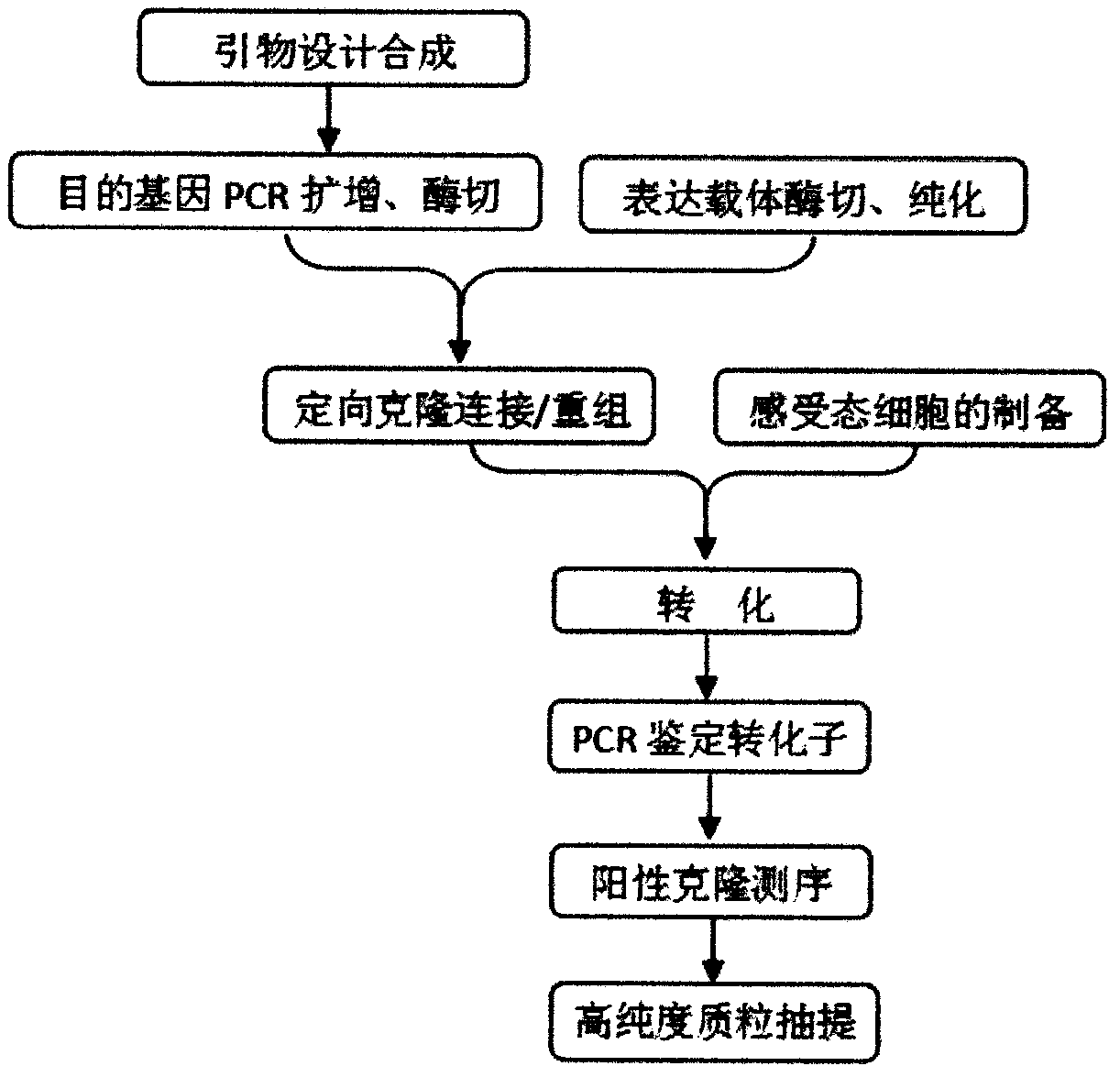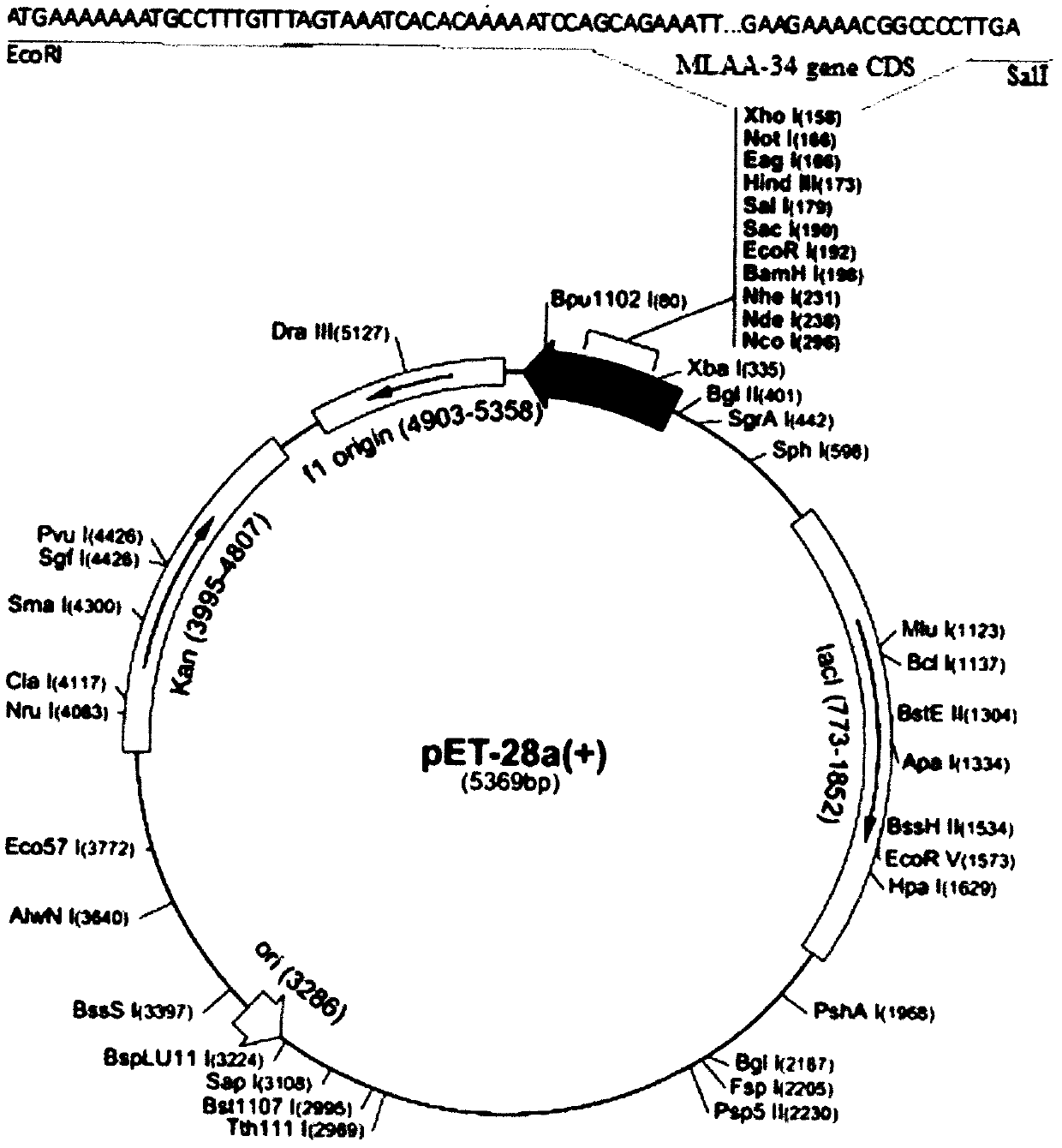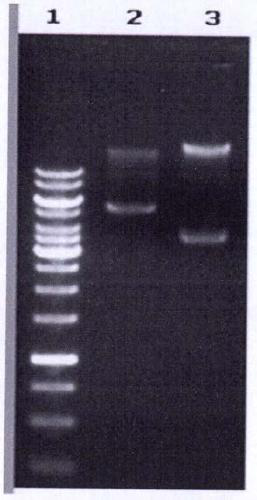Anti-monocytic leukemia-associated antigen mla-34 fully human monoclonal single-chain antibody scfv
A mononuclear cell and single-chain antibody technology, applied in the direction of anti-receptor/cell surface antigen/cell surface determinant immunoglobulin, anti-animal/human immunoglobulin, immunoglobulin, etc., can solve the problem of non-panning And identified problems such as fully human monoclonal antibody, to achieve the effect of small molecular weight, strong penetrating power, and favorable application
- Summary
- Abstract
- Description
- Claims
- Application Information
AI Technical Summary
Problems solved by technology
Method used
Image
Examples
Embodiment 1
[0059] 1.1.1 Construction of prokaryotic expression vector
[0060] The total RNA in U937 cells was extracted, reverse-transcribed into cDNA, using cDNA as a template strand, primers were designed, and the coding region of MLAA-34 was amplified by PCR. The target carrier is digested, and the digested products are recovered by electrophoresis and exchanged, and the products are transformed into bacterial competent cells. Colony PCR identification was performed on the grown clones first, and then sequencing and comparative analysis were performed on the positive clones identified by PCR. The correct comparison was the successful construction of the target plasmid ( Figure 3-1 ). figure 1 Flowchart for the construction of the prokaryotic expression vector for the target gene, figure 2 A map of the expression vector.
[0061] 1) Enzyme digestion of the vector.
[0062] Enzyme digestion reaction temperature: 37°C, enzyme digestion reaction time: 2h,
[0063] Table 1 enzyme d...
PUM
| Property | Measurement | Unit |
|---|---|---|
| concentration | aaaaa | aaaaa |
Abstract
Description
Claims
Application Information
 Login to View More
Login to View More - R&D Engineer
- R&D Manager
- IP Professional
- Industry Leading Data Capabilities
- Powerful AI technology
- Patent DNA Extraction
Browse by: Latest US Patents, China's latest patents, Technical Efficacy Thesaurus, Application Domain, Technology Topic, Popular Technical Reports.
© 2024 PatSnap. All rights reserved.Legal|Privacy policy|Modern Slavery Act Transparency Statement|Sitemap|About US| Contact US: help@patsnap.com










